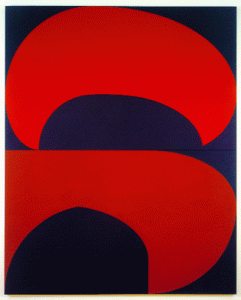
Our visit to Suzan Frecon’s studio was much more than a conversation with a painter concerned with color. She opened up herself and her studio to a group of people with diverse interests: physics, astronomy, art, literature, and writing. She engaged with all of us, touching on: the temporal nature of color, the role of story versus experience in her paintings, the way in which the setting sun opens and closes the spaces in the paintings hanging on the walls of her studio. Suzan was an amazing host, ushering us from one room to the next, helping our eyes to follow the setting sun. Her studio was strewn with graph paper sketches of her paintings, jars of fresh pigment, paperweight rocks, and a select group of books open to pages showing a diversity of images. It was a magical space and Frecon was a spectacular guide.
I was particularly affected by her discussion of one small painting, made on a slab of wood. It comprised two red shapes floating on a blue background. The painting we saw was a study for something larger. As she told us, it started with a basic idea: two red shapes on blue, each of equal area. The bottom shape came quickly- the top, on the other hand, took much more time and work. After 50 tries Frecon got it- sketched out, she knew it was a perfect complement. I have been a bit obsessed with this story (and the image of her painting) ever since.
Art is typically a game played by those with egos- or at least I have convinced myself of that. How else could I understand the ‘choices’ apparently made in the objects and images produced by artists? A ‘finished’ piece of art is an assertion of power, of vision. I have always imagined that this assertion is not done though calm contemplation and in hushed tones, but instead it comes out forcefully, in screams- it is the vision of the artist as a projection of a strength of will- only though a crazed and strong personality could a person convince so many others to consider their vision as the vision. Frecon’s description of her process in making this painting challenged this picture.
First, her insistence that the two red shapes have the same area. I still wonder: is this something that the eye can see? What if the areas were only crudely equal? But, seeing the graph paper and sketches in her studio, I imagined a painstaking process making sure that each of her 50 trial curves outlined exactly the same area. What did those other thrown-away shapes look like? What did they lack that this one has? Frecon’s seriousness, warmth, and openness convinced me that whatever they looked like, whatever they lacked, it was for a real considerate reason that they were rejected.
The description of her process reminded me of one of the main tools of my trade: Monte Carol Markov Chains. It is an automated process which explores the agreement between a theoretical model described by a set of parameters and a data set. At each point in the chain the parameters of the model take on a certain value and the model’s predictions are compared to the data set. The parameters are then (randomly) changed to other values and the comparison happens again- if the predictions better match the data then the chain moves to this new point; if the match is worse, the program tries a new set of parameters. The key is that we have a quantitative way to compare the model’s predictions to the data set- a metric- called the chi-squared. As Suzan explained her 50 trial shapes I imagined a creative chi-squared pre-programed in her brain, each time checking the trial against her innate data set which defined the ideal second, equal-area, red shape floating over a liquid blue background. Hers was a rigorous process that elevated a personal sense of what is aesthetic from an opinion to a fact.
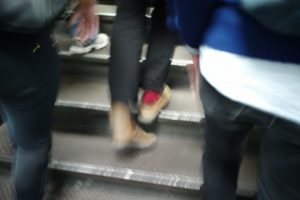

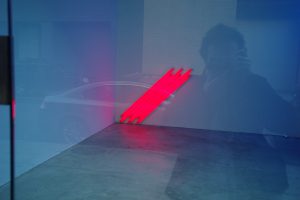
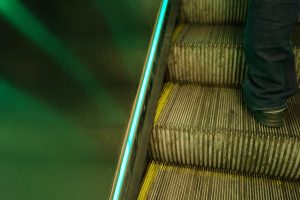
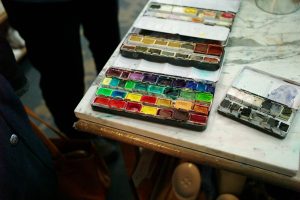
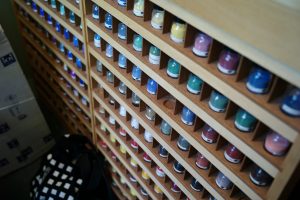
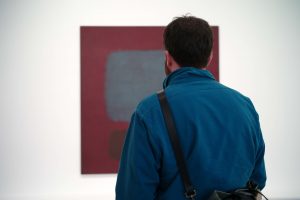
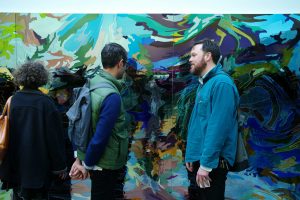
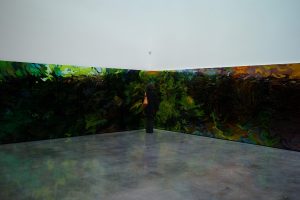

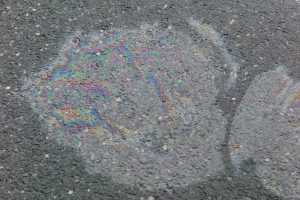
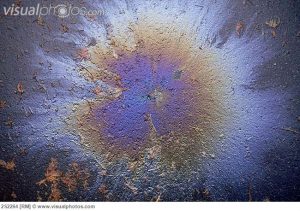


Recent Comments